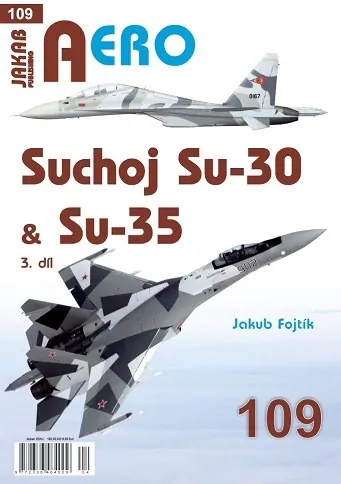
- aviationmegastore.com
- aviationoutletstore.com
- Ship to United States
Quick Search
Aviation Shop
categories- Aircraft Scale Models
- Airplane Skin Tags
- Aviationbooks
- Aviationbooks
- Airports/Air Bases
- Aviation Humor/Comics
- Civil Aviation
- Disasters/Flight Safety
- Fiction
- Aviation History
- Magazin
- Military Aviation
- Modelling
- Pilot Books
- Preservation,Vintage,Musea,W&R
- Aircraft Recognition Book
- Special Offer Aviation Books
- Aircraft Spottersbook
- Various Aviation Subjects
- World Wars
- X-Planes Germany
- Metal Signs
- Pilot Shop
- Scale Modelling Kits
- Various Aviation items
Downloads
Frequent buyers programme
Collect Megapoints for Megavouchers
Read the conditions...
Hold & Store service ©
Aviation Megastore offers unique Hold & Store service © for internet customers that wish to combine several individual orders to one single shipment, reducing the overall shipping cost significantly.
Read more...
Suchoj Su30 & Su35 3.díl
Product code 9788076480933
€ 10.05
Series Aero 109
Publisher/Brand Jiri Jakab
Author Jakub Fojtik
Format a4
No. Pages 50
Version Soft cover
Language Czech
Category Aviationbooks
Subcategory Eastern Europe » Soviet Jet Aircraft
Availability only 2 remaining
This product was added to our database on Monday 6 May 2024.
Your reliable Aviation Book Source since 1989
Also in this series:
| product | Publisher/Brand | Series/scale | Price € | ||
 | Aero Special Ceskoslovenská dopravní letadla 1919-1939 / Czechoslovak transport aircraft 1919-1939 | Jiri Jakab | Aero Special 2 | € 8.21 | |
 | B-25 Mitchell v SSSR a Tupolev SB (B-25 Mitchell in the USSR and Tupolev SB) | Jiri Jakab | Aero 34 | € 5.46 | |
 | Eurofighter TyphoonExpected | Jiri Jakab | Aero 121 | € 10.05 | |
 | Fotokronika letouny firmy Heinkel 1.díl / Photo Chronicle of Aircraft of the Heinkel firm part 1 | Jiri Jakab | Aero Special 6 | € 7.29 | |
 | General Dynamics / Lockheed Martin F16 Fighting Falcon | Jiri Jakab | Aero 82 | € 8.21 | |
 | McDonnell Douglas/Boeing F-15 Eagle | Jiri Jakab | Aero 112 | € 9.13 | |
 | Messerschmitt BF109E Dil 6 Part 6 | Jiri Jakab | Aero 114 | € 10.05 | |
 | MiG-15UTI v Cs. vojenském letectvu / MiG15Uti in Czechoslovak Air force service | Jiri Jakab | Aero 102 | € 10.05 | |
 | MiG21MF v CS. a Ceském letectvu 4.díl / MiG21MF in Czechoslovak Service Part 4 | Jiri Jakab | Aero 71 | € 7.29 | |
 | P-39 Airacobra Dil3 / Part 3, Bell P-39K, P-39L, P-39M, P-39N | Jiri Jakab | Aero 84 | € 8.21 |
Product description
In the previous parts of the publication, a series of the initial model Sukhoi Su-27 was presented, as well as the naval special Su-27K/Su-33 and the Su-34 battleship. The last members of the family are the Su-30 and Su-35 versions of the aircraft, which are still in production today. They can be considered the most powerful representatives of the Su-27 family. The Su-30 was created on the basis of the Su-27M modernization project, which was not completed before the collapse of the USSR and was met with typical post-revolutionary chaos. But a very timeless assignment from the eighties meant that a number of new technologies were verified on the Su-27M, which became the basis for the new version of the Su-30 and which were further supplemented with the possibility of integrating new elements from the Western world. The resulting Su-30 model is therefore the most successful export representative of the entire family, which serves in hundreds of units in Russia, India, China and many other countries in Africa, Asia and South America. Since the aircraft are often also used for command and control of air operations, all Su-30s are two-seater. The subsequent Su-35 is the final type derived from the Su-27M version, but returns to the single-seater configuration, as the role of the second crew member was to be played by advanced fully digital avionics in this aircraft. In its latest standard, it is classified as 4.5 generation (or generation 4+), which should clearly indicate the distance from the Su-27 family. With the Su-35, the manufacturer expected an enormous commercial success, when this aircraft was to become a replacement for the aging Su-27 of the first generation, but also for Western types such as the F-4 and others. But that never happened, and so far the Su-35 service is limited to Russia and China, and Iran was supposed to be the last user. For Russia, it seems that the potential of the Su-27/30/35 is practically exhausted, because even traditional customers such as China and India are more interested in the next generation of multi-purpose machines, and many smaller states turned away from Russia after the start of the war in Ukraine. And if they haven't, it's usually poorer countries that don't have the budget to buy similar aircraft. The pace of aircraft production is falling, and if Russia does not re-order more aircraft for its air and space forces, there may even be a production shutdown for the first time. The Su-30 and Su-35 families have the longest service of all versions, along with the Su-34. And its description symbolically concludes the fate of the entire branched family born from the extremely timeless Su-27 for its time.
- aviationshopsupplies.com
- aviationmegatrade.com
© 1989–2025 Luchtvaart Hobby Shop B.V.






